mytest
Hi Blog. I spent the weekend writing up a 6000-word essay for publication at an academic source on the GAIJIN HANZAI Case and what it means.
I believe it is an historical event–the first time we’ve seen the “Newcomer” immigrants band together and show their muscle as an economic bloc.
I also speculate on who the publisher, “Joey H. Washington”, is.
I believe it is the police.
Hear me out.
The arguments as I present them in my essay, FYI, follow below. This is still a rough draft (and footnotes are not included for the time being), and not necessarily how it will turn out in the final version. But I think my reasoning is pretty strong. See for yourself if you agree.
(And see the whole GAIJIN HANZAI mook scanned in full at http://www.flickr.com/photos/ultraneo/sets/72157594531953574/)
Arudou Debito in Sapporo
UPDATE MARCH 16: FINALLY GOT THE ACADEMIC VERSION DONE, SHOULD BE OUT PRESENTLY. WATCH THIS BLOG. AND SINCE I INCLUDED PHOTOS IN THE ACADEMIC VERSION, IT’S A CINCH TO ADD THEM TO THIS BLOG POSTING. ADD SEVERAL THOUSAND WORDS WITH SEVERAL PICTURES, AS THEY SAY. –DEBITO
———————-
PS: Just heard word last night–somebody found 15 GH mags on sale at bookstore Junkudo in Tenjin, Fukuoka March 2.
He notified the shopkeeps of the issue and the books were taken off the shelves. Eyes peeled, everyone. D

////////////// EXCERPT BEGINS /////////////////////////
THE INVISIBLE HAND BEHIND THE MOOK
In the end, one mystery remains: Who produced this publication? The “publisher” (hakkousha) listed on the binding is a Mr “Joey H. Washington”, who does not exist. Despite repeated requests, Saka refuses to reveal his patron.
This matters, because it is clear that whoever funded this is rich and powerful. There are no advertisements whatsoever within GAIJIN HANZAI, yet, according to a source in the publishing world, it would cost at least a quarter of a million dollar US to print something of this quality and volume. Moreover, this patron is powerful enough to convince Saka, who initially agreed to appear at a luncheon press conference with the United Nations at the Foreign Correspondents Club of Japan (FCCJ) on February 26, to avoid the event 23.
Allow me to speculate. I believe the National Police Agency, or some police branch, was behind it. Here are my arguments behind that belief:
For one, I mentioned deep pockets, and what deeper pockets are there than tax monies (which the NPA, and particularly the National Public Safety Commission (kokka kouan iinkai) with their secret budgets and a clear mandate to monitor foreigner activity24 , have ample access to)?
Another clue is the degree of information and access to the police. No fewer than three articles quote the NPA or ex-police, and the last pages have masterful summaries of foreign crimes (including names and ages) that would be most easily collated by the police databases. Even Saka admitted in his abovementioned ipcdigital interview that, “We have spoken with Japanese police in order to write each article. For them this issue is serious and they have provided the data.” [Emphasis mine]. It is remarkable that the police would cooperate to this degree with Eichi Shuppan, a mid-tier pornography publisher, given the borderline illegality and threat to “public morals” (fuuki) that the sex trades pose within Japan.
Finally, the photos are a giveaway. Either the photographer has the patience of Ansel Adams and the ability to be everywhere at once, or these are police photographs and camerawork. The police feature prominently in several photographs, and given how sensitive cops are to being photographed (I have received many reports from angry photographers, who have been told by police to delete their photos on site, wondering if the NPA even the right to demand that in a public place), the photographer must be wearing an invisibility cloak.
(Make your browser window as wide as possible to see these pages side by side)
Not to mention own a hang glider, since many of the shots are “eye in the sky”, at just the right angle to be from surveillance cameras.
These spy cameras, by the way, are proliferating throughout certain regions of Tokyo (such as Roppongi and Kabukicho) precisely because they have a high foreign population. However, in GAIJIN HANZAI, no other place in Japan is even included photographically with crowds of foreigners. Only places with police surveillance cameras. For a book cataloging foreign crime throughout Japan (and there are many other places, such as towns in Shizuoka and Gifu Prefectures, with higher percentages of foreigners), the visual focus on Tokyo is oddly convenient for the police.
Finally, there is data in this book that only the police have access to, such as a passport photo of a suspect (page 19).
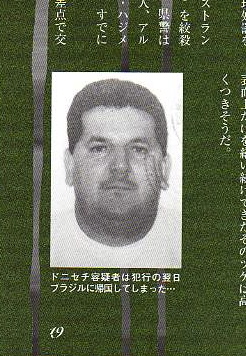
If they are not financially behind the mook, then they are certainly supplying the data, and perhaps some of the analysis.
This would be within character of the NPA since 1999. As I have written in my book JAPANESE ONLY (Akashi Shoten Inc. 2006, pages 196-209), there was a sea change in police attitudes towards foreigners shortly after the founding of the “Policy Committee Against Internationalization (kokusaika taisaku iinkai) in May 1999. By the very title of the organization, and the policy writeup in JO pages 206-207, police would see foreigners and the internationalization they would cause as a source of crime, something to create taisaku policy against.
This policy shift was apparent less than a year later, with Tokyo Governor Ishihara’s famous “Sangokujin Speech” of April 9, 2000. Ishihara called upon the Self-Defense Forces to fill in the gaps in Japan’s police forces in the event of a natural disaster, since foreigners would unprecedentedly riot. Since then, the Tokyo Government (the current vice-governor is an ex-cop), the Koizumi Administration, the media, and local police agencies made concerted efforts to create and disperse public-service information on the threat to public safety and stability (such as “infectious diseases and terrorism “) which foreigners allegedly pose 26.
This has reached a degree where even an academic survey has reported: “[T]he Japanese public’s fear of crime is not in proportion to the likelihood of being victimized. What is different is the scale of this mismatch. While Japan has one of the lowest victimization rates, the International Crime Victim Surveys indicate that it has among the highest levels of fear of crime…”27 . The report goes on to say, “[T]he Japanese press… is presenting a partial and inaccurate picture of current crime trends.” Another academic concurs, to say that in media coverage, “crimes by foreigners were 4.87 times more likely to be covered than crimes by Japanese.”28
Given that the NPA gives regular biannual reports to the media appraising them specifically of the rise in foreign crime rates (and decline, although sometimes the Japanese media refuses to report it 29), the NPA supplying this publisher with this much information is in this author’s opinion neither unprecedented nor out of character. Not to mention that in this age of terrorism, whipping up public fear has proven a very effective measure for loosening public purse strings.30
/////////////////// EXCERPT ENDS /////////////////////////
Full essay to come…
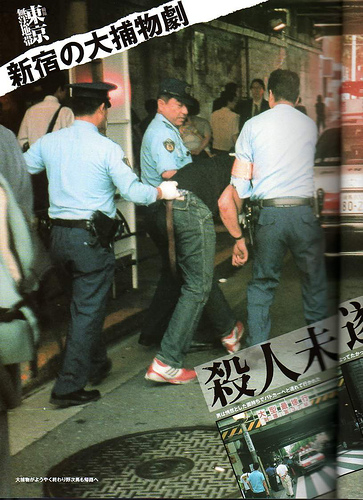
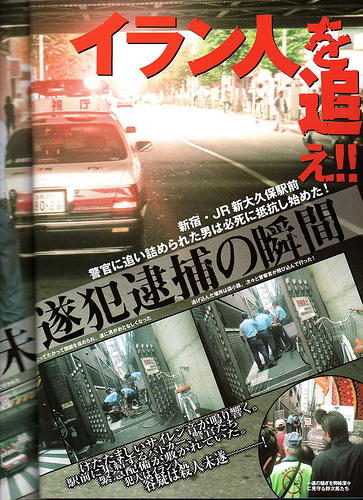
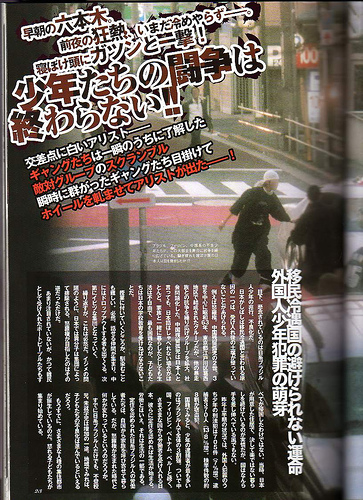
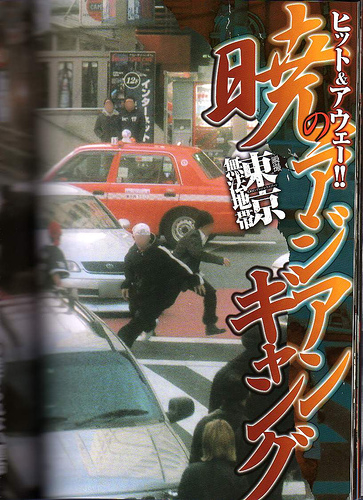
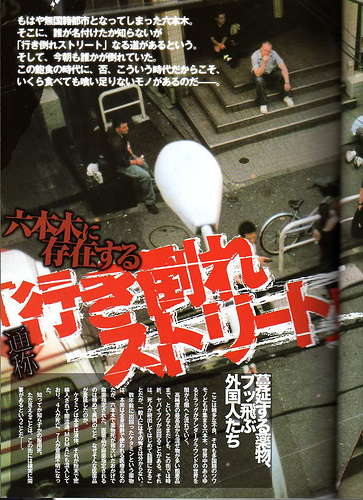
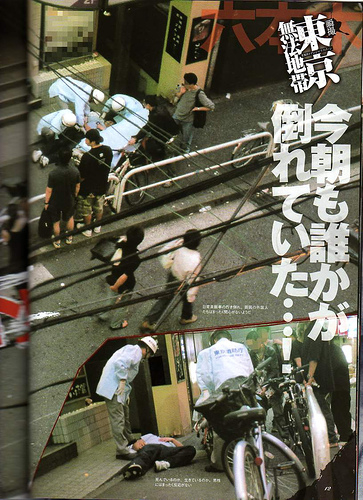
11 comments on “GAIJIN HANZAI: Why I believe the police were behind its publication (UPDATED)”
Debito-san,
I would love to talk to you about making a documentary film covering this topic.
–GREAT! WILL DO WHAT I CAN TO HELP OUT. YOU KNOW WHERE TO REACH ME. 🙂 DEBITO
Debito-san:
Greetings from San Antonio, Texas, U.S.A.
I have been reading your blog entries regarding blatant xenophobia in Japan for quite some time and applaud all of your efforts to root out this unnecessary evil of japanese society. It must be noted, however, that japanese xenophobia is not, in my opinion, restricted to “mooks” the like of “Gaijin Hanzai”. My son is a big fan of japanese manga, and one of the titles I believe displays this xenophobic attitude is authored by Hideaki Sorachi titled “Gintama.” This manga title is found in the monthly Shonen Jump manga readily available here in the states, (found locally at Barnes & Nobles and other bookstores.) I’ve found a website that will allow you to read the first chapter of Gintama in its entirety here: . You will find this serialized manga parallels the xenophobia currently being experienced in Japan quite accurately.
Please review the manga at the link provided above and comment at your earliest convenience. I eagerly look forward to reading your opinion regarding this manga title.
Please do not hesitate to contact me with any questions or concerns you may have regarding the issue I have raised.
Thank you very much for all the work you do in exposing this most disturbing Japanese phenomenom. Pioneers such as yourself are exactly what are needed to effect positive change in society, not just in Japan but all over the world. I wish you continued success in your endeavors and look forward to your continued contributions on this issue.
Damian Sanchez
San Antonio, Texas, U.S.A.
One thing I can only stress is EVIDENCE, EVIDENCE, EVIDENCE.
If you can prove the police are behind the book or agreed to help with it at least then you can at least expose this and cause embarrassment to them by their association. It will at least make them think again about raising their ill-conceived ideas about this subject again.
In fact, it might even make them think twice about being vocal about “foreign crime statistics” in general in the future.
PLEASE get as much evidence as you can! Good luck!
–THANKS. WILL DO. DEBITO
I don’t know if I buy that. Don’t get me wrong, you’ve got a lot of backing to your theory. And especially in this case, the simplest explanation seems to be reserved for the conspiracy theorist, which is ironic.
It just seems like a rather pathetic attempt if the whole of the Japanese police force were responsible. A backing of $250,000, and nothing but a waylaid magazine to show for it? Wouldn’t they make a stronger effort to spread their message?
–THE NPA HAS MADE A LOT OF EFFORTS TO SPREAD THEIR MESSAGE. DO A SEARCH FOR “POLICE” OR “FOREIGN CRIME” ON MY SITE. PUTTING A LOVELY TOME (I MEAN IT–IT’S A WELL-PRODUCED MAGAZINE) WITH THIS MUCH DATA AND SHOCK VALUE ON EVERY CONVENIENCE STORE IN THE COUNTRY IS NOT A WEAK EFFORT. ESPECIALLY IF IT SOLD OUT AND BECAME A BEST-SELLER. I’VE FOUND MANY BOOKS ON FOREIGN CRIME. NONE QUITE THIS WELL-PRODUCED AND VISUAL FOR THE MASS MARKET.
LOOK, I WISH I COULD FIND THE METAPHORICAL “SMOKING GUN”. IT’S NOT THAT EASY, OF COURSE, BECAUSE IF THE NPA ACTUALLY *WERE* BEHIND IT, IT WOULD CAUSE MAJOR RUCTION. HOWEVER, MY SUSPICIONS WERE TOO GREAT TO KEEP TO MYSELF. I WRITE THEM UP FOR PUBLIC CONSUMPTION, IN HOPES THAT OTHER PEOPLE CAN START SNIFFING AROUND TOO.
I’VE ALREADY BEEN DISMISSED AS WEARING A TINFOIL HAT. AH WELL. DE RIEN. DEBITO
I’m not pointing you out as a conspiracy nut. Quite the contrary: I believe such actions are the police are very possible; I just don’t think so in this case.
I guess I just have a different perspective about the impact of the magazine, probably because I never encountered it in my travels, nor have I felt anything remotely discriminative in Japan; I know it exists, but firsthand experience changes everything.
Show me the smoking gun or some evidence, and I’ll back you to the end. Gambatte.
–ADDED PHOTOS. HOPE THAT HELPS ILLUSTRATE BETTER. THE UPCOMING FULL ARTICLE HAS EVEN MORE PICS AND A CASE VETTED BY TWO ACADEMICS. THEY KEPT THE SPECULATION WITHOUT TRIBULATION. DEBITO
[Japanese have an annoying cultural hang-up (a psychological or emotional difficulty or inhibition) of blaming everything on foreigners. And history does repeat itself!}
1923 Great Kantō earthquake
From Wikipedia, the free encyclopedia
The 1923 Great Kantō earthquake (関東大震災, Kantō daishinsai?) struck the Kantō plain on the Japanese main island of Honshū at 11:58 on the morning of September 1, 1923. The quake was later estimated to have had a magnitude between 7.9 and 8.4 on the Richter scale, with its epicenter under Sagami Bay.
[Naturally (!) Koreans living in Japan were blamed for the quake… subsequent rioting, looting, arson and even worse, poisoning wells! who else but the foreignors would do such an awful thing in Japan?
…
The Home Ministry declared martial law, and ordered each section police chief to put the maintenance of order and security as a priority. One of the messages was that “There are some Koreans who are taking advantage of this disaster, committing arson as part of robberies within Tōkyō. Some of them possess bombs. Tōkyō is under martial law and each area (of police force) should be extremely vigilant about Korean activities.” Some newspapers reported this message. This started the deadliest rumour of all, that Koreans are rioting, committing looting and arson, and most importantly, poisoning wells. The numerous fires and cloudy well water (a little-known effect of a big quake) all seemed to confirm the rumours in the eyes of the fear-stricken survivors living in the rubble. Vigilante groups set up roadblocks in cities, towns and villages across the region. Because people with Korean accents pronounced “G” or “J” in the beginning of words differently, 15円 50銭 (jū-go-en, go-jū-sen) and がぎぐげご (gagigugego) were used as shibboleths. Anyone who failed to pronounce them properly was deemed Korean. Some were told to leave, but many were beaten or killed. Moreover, anyone mistakenly identified as Korean, such as Chinese, Okinawans, and Japanese speakers of some regional dialects, suffered the same fate.
…
More than 2,000 Koreans were taken in for protection from the mobs across the region, although recent studies have shown that there were incidents where army and police personnel are known to have condoned or even colluded in the vigilante killings in some areas.
…
The total death toll from these disturbances is uncertain; according to the investigation by the Home Ministry, confirmed victims of vigilante justice were 231 Koreans killed and 43 injured, 3 Chinese killed, 59 Japanese (including Okinawans) killed and 43 injured. Actual estimates range as high as 6,600, although politically independent studies put the figure at just over 2,500. Three hundred and sixty-two Japanese civilians were eventually charged (for murder, attempted murder, manslaughter and assault), though most got off with nominal sentences, and even those who were sent to jail were later released with a general pardon commemorating the marriage of Prince Hirohito.
[Does anyone see any connection between the brave Imperial army’s rape of 200,000 Korean females, a couple of decades later, and the Tokyo quake, possibly as a means of retaliation? Are you are planning to disguise your shibboleths, undergo cosmetic surgery, or get a Japanese passport like Debito to protect yourself in the next big one?]
I think you’ve just back-tracked a lot there Reader 77.
That same logic (that the Japanese have done something wrong in the past therefore their are incapable of doing anything but wrong) could be used to wage attacks on any group of people in the world. In fact, that could be turned around to justify the rounding-up of Koreans after the earthquake. I’m sure it wouldn’t be hard to find a case where an ethnic Korean committed a petty crime at some point in history, I guess it just goes to show that they’ve got some annoying cultural hang-up right?
But no, that’s clearly not the case. I don’t think you’ve been reading Debito’s blog very much. Had you, you would have a least an inkling of common sense. Commenting on a blog with out even reading it — now that’s an annoying cultural hang-up.
Wouldn’t a news service also have access to these photos? I would assume the media would also have contact with current and former police as well. Just a thought, though if Japanese cops were behind this it wouldn’t suprise me in the least.
Even though sounds like you would never ever prove it to the police.
I can see what you are talking about and actually your theory is pretty sound.
Especially the part about cameras and photographs. Great Work. Love your website.